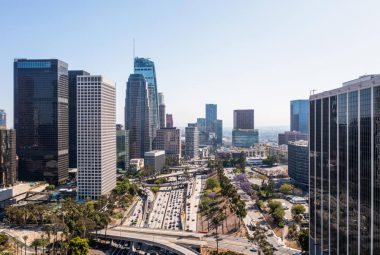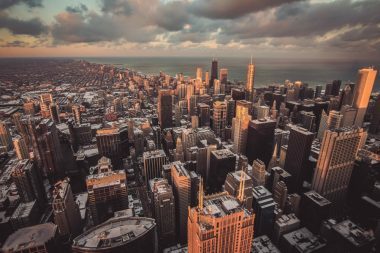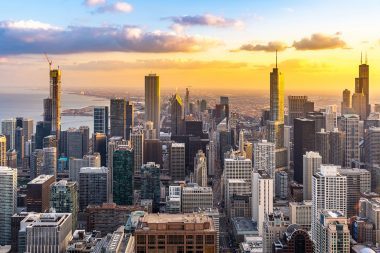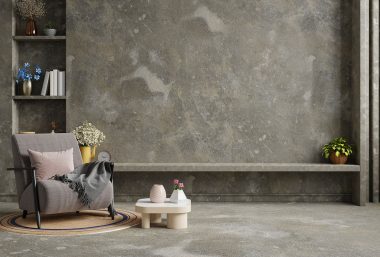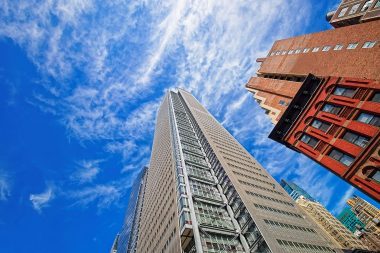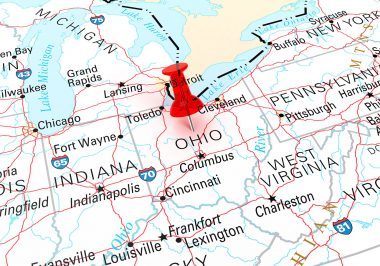ISO Construction Types: Complete Guide to Building Classifications [2025]
Updated Tue, Oct 7, 2025 - 38 min read
Top blog articles
Whether you’re building a new home, purchasing commercial property, or simply trying to understand your insurance premiums, ISO construction types play a crucial role in determining building safety, insurance costs, and construction decisions. These classifications, established by the Insurance Services Office (now part of Verisk Analytics), provide a standardized system for evaluating buildings based on their fire resistance and construction materials.
Understanding ISO construction types isn’t just an academic exercise: it directly impacts your wallet, safety, and property value. Buildings with superior fire resistance (ISO Type 1) can see insurance premium reductions of 30-50% compared to combustible frame construction (ISO Type 5-6), while also offering enhanced safety for occupants and better long-term durability.
This comprehensive guide explains all six ISO construction classifications, what factors determine a building’s classification, how these types affect insurance rates, and practical considerations for property owners, builders, and real estate professionals. Whether you’re evaluating existing buildings or planning new construction, this knowledge empowers better decision-making about safety, costs, and value.
What Are ISO Construction Types?
Understanding the Classification System
ISO construction types are standardized building classifications that the insurance industry uses to assess fire risk and determine appropriate insurance premiums. Originally developed by the Insurance Services Office (ISO) and now managed by Verisk Analytics, these classifications categorize buildings from highest fire resistance (Type 1) to highest fire risk (Type 6), based on the combustibility of structural materials and fire-resistance ratings.
Purpose of ISO Classifications:
Insurance Risk Assessment: Insurance underwriters use ISO construction types as a primary factor in calculating property insurance premiums. Buildings with superior fire resistance present a lower risk of total loss, resulting in lower insurance costs for property owners.
Standardized Building Evaluation: The system provides consistent criteria for evaluating buildings nationwide, ensuring uniform risk assessment regardless of location or building size. This standardization helps insurance companies, lenders, appraisers, and property owners communicate clearly about building characteristics.
Fire Safety Planning: Fire departments and emergency responders use construction classifications to understand building fire behavior, plan response strategies, and allocate resources effectively during emergencies.
Building Code Compliance: While ISO classifications differ from International Building Code (IBC) construction types, they complement building code requirements and help verify that structures meet appropriate safety standards.
History and Development
The Insurance Services Office developed construction classifications in the mid-20th century as fire protection engineering evolved and new building materials emerged. As construction techniques advanced (from heavy timber to steel frame to reinforced concrete) the insurance industry needed standardized methods to evaluate fire risk across increasingly diverse building types.
Today, Verisk Analytics maintains these classifications through its Fire Suppression Rating Schedule (FSRS), which measures fire prevention and suppression capabilities of communities and individual structures. The system continues evolving to address modern construction methods, materials, and fire protection technologies.
Key Factors That Determine ISO Construction Classification
Construction Materials
The primary factor determining ISO classification is the combustibility of structural materials used throughout the building. This comprehensive evaluation examines every major building component.
Structural Frame: The building’s skeleton (whether wood studs, steel beams, or reinforced concrete columns) forms the foundation of the classification. Combustible wood framing generally results in higher-risk classifications (ISO 5-6), while non-combustible steel or concrete frames indicate lower risk (ISO 1-4).
Exterior Walls: Wall construction significantly impacts fire spread potential. Exterior wall materials are evaluated for both load-bearing and non-load-bearing applications:
- Fire-resistive materials: Reinforced concrete, concrete masonry units (CMU), brick
- Non-combustible materials: Steel studs with non-combustible sheathing, metal panels
- Combustible materials: Wood framing with any exterior cladding
Interior Walls and Partitions: Interior construction affects fire spread within buildings. Load-bearing interior walls receive particular scrutiny, but non-bearing partitions also factor into overall classification. Wood-framed interior walls, even in buildings with non-combustible exteriors, can downgrade overall classification.
Floor Construction: Floor systems (including joists, subflooring, and structural decking) are evaluated for combustibility:
- Fire-resistive: Cast-in-place concrete, precast concrete planks
- Non-combustible: Steel decking, concrete on metal deck
- Combustible: Wood joists with plywood or OSB subflooring
Roof Construction: Roof framing, decking, and covering all influence classification:
- Fire-resistive: Concrete roof deck on steel or concrete beams
- Non-combustible: Metal roofing on steel framing
- Combustible: Wood trusses or rafters with plywood sheathing
Fire Resistance Ratings
Beyond material combustibility, fire resistance ratings measure how long building components can withstand standard fire exposure while maintaining structural integrity.
What Fire Resistance Ratings Measure:
Fire resistance ratings, expressed in hours, indicate the duration that building components can withstand standardized fire testing without failure. Testing evaluates three critical performance criteria:
Structural Integrity: Components must support applied loads without collapse for the rated duration. A 2-hour fire-rated floor assembly must continue supporting designed loads throughout two hours of fire exposure.
Heat Transmission: Components must limit heat transfer to the unexposed side, preventing fire spread to adjacent spaces. Excessive heat transmission on the unexposed side fails the test even if the component doesn’t structurally fail.
Flame Passage: Components must prevent flame penetration through cracks, holes, or other openings. Even small openings that allow flame passage constitute failure.
Common Fire Resistance Ratings:
- 4-hour rating: Highest rating, typically for structural elements in high-rise buildings
- 3-hour rating: Required for certain fire walls and shaft enclosures
- 2-hour rating: Minimum for ISO Type 1 (fire-resistive) construction
- 1-hour rating: Common for ISO Type 2 (modified fire-resistive) applications
- No rating: Applies to combustible construction (ISO Types 5-6)
Testing Standards: Fire resistance testing follows standardized protocols including ASTM E119 and UL 263, ensuring consistent evaluation across different laboratories and manufacturers. These tests subject building assemblies to controlled fire exposure following time-temperature curves representing real fire conditions.
How Materials and Ratings Interact
ISO classifications require both non-combustible materials AND appropriate fire resistance ratings for higher classifications. A building might use steel framing (non-combustible) but lack sufficient fire-resistive coating or insulation to achieve necessary ratings, resulting in a lower classification than the materials alone would suggest.
Conversely, combustible materials can never achieve the highest ISO classifications regardless of fire protection measures applied. Wood framing, even with fire-retardant treatment, remains fundamentally combustible and therefore cannot achieve ISO Type 1-4 classifications.
The Six ISO Construction Types Explained
ISO Type 1: Frame Construction (Highest Fire Risk)
Classification: Combustible construction
Fire Resistance Rating: No fire resistance rating required
Typical Applications: Single-family homes, small apartment buildings, wood-frame commercial buildings
Characteristics:
ISO Type 1, also called “frame construction,” represents the most fire-vulnerable building category. These structures feature combustible materials in exterior walls, floor systems, roof framing, or combinations thereof. The structural frame typically consists of wood studs, joists, and rafters supporting the entire building.
Common Materials:
- Framing: Dimensional lumber (2×4, 2×6, 2×10, 2×12), engineered wood products (LVL, I-joists, trusses)
- Exterior walls: Wood framing with any cladding, vinyl siding, wood siding, brick veneer over wood framing, or stucco over wood framing
- Floor systems: Wood joists with plywood or OSB subflooring
- Roof systems: Wood trusses or rafters with plywood or OSB sheathing
- Interior finish: Drywall over wood framing
Fire Behavior:
Frame construction burns readily once ignited. Wood structural members lose strength rapidly under fire exposure, leading to potential collapse within 20-30 minutes, depending on member size and fire intensity. The entire building structure essentially serves as fuel, accelerating fire spread and increasing total loss potential.
Insurance Implications:
ISO Type 1 buildings carry the highest insurance premiums due to elevated total loss risk. Premium differences compared to fire-resistive construction can reach 40-60% for otherwise identical buildings. However, frame construction remains popular for residential applications due to significantly lower initial construction costs.
Prevalence:
Frame construction dominates residential building stock in North America. Approximately 80-90% of single-family homes and many small multi-family buildings use wood frame construction, making ISO Type 1 the most common classification in residential markets.
Modern Considerations:
While inherently combustible, modern frame construction incorporates fire safety improvements including:
- Fire-retardant-treated lumber in certain applications
- Fire-rated drywall provides some protection to wood framing
- Residential sprinkler systems in newer homes
- Improved building codes requiring fire separation between units
- Better compartmentalization limits fire spread
For homeowners with frame construction, understanding these fire risks emphasizes the importance of smoke detectors, fire extinguishers, sprinkler systems, and comprehensive home insurance coverage.
ISO Type 2: Joisted Masonry (Moderate-High Fire Risk)
Classification: Non-combustible exterior walls with combustible interior framing
Fire Resistance Rating: Generally, no rating or a minimal 1-hour rating
Typical Applications: Older apartment buildings, small commercial buildings, mixed-use buildings
Characteristics:
Joisted masonry construction, also called “brick and joist” or “mill construction” in some regions, combines non-combustible exterior walls with combustible interior floor and roof systems. This hybrid approach provides better fire resistance than pure frame construction while remaining more economical than fully non-combustible building methods.
Common Materials:
- Exterior walls: Solid brick (multiple wythes), concrete masonry units (CMU/concrete block), structural brick bearing walls
- Floor systems: Wood joists (often larger than residential, 2×10, 2×12, or heavier) with wood subflooring
- Roof systems: Wood joists, rafters, or trusses with wood decking
- Interior framing: Wood studs for partition walls
- Interior finish: Plaster on wood lath (historically) or drywall on wood framing
Fire Behavior:
Joisted masonry performs better than frame construction but still faces significant fire vulnerability. Exterior masonry walls typically survive fires intact, potentially allowing rebuilding using existing walls. However, wood floor and roof systems burn readily, causing collapse that can damage or destabilize masonry walls. Floor joists bearing on masonry walls can push walls outward as they burn and collapse, requiring wall rebuilding despite fire-resistive materials.
Historical Context:
This construction type dominated urban development from the late 1800s through the mid-1900s. Building codes in many cities mandated non-combustible exterior walls to prevent fire spread between buildings after devastating urban fires (Chicago 1871, San Francisco 1906) demonstrated the dangers of all-wood construction in dense development.
Insurance Implications:
Insurance premiums for joisted masonry fall between frame construction and fully non-combustible buildings, typically 15-30% lower than comparable frame structures but 20-40% higher than non-combustible construction. The non-combustible exterior provides some protection, but combustible floor systems maintain significant total loss potential.
Renovation Considerations:
Many joisted masonry buildings undergo renovation or adaptive reuse. When renovating these structures, owners should consider:
- Replacing deteriorated wood joists with steel when possible
- Adding fire sprinkler systems to mitigate combustible interior risk
- Ensuring adequate fire separation between units
- Addressing any moisture damage to wood framing members
- Evaluating masonry wall condition, particularly joist bearing points
ISO Type 3: Non-Combustible Construction (Moderate Fire Risk)
Classification: Non-combustible materials throughout, but with limited or no fire resistance rating
Fire Resistance Rating: Less than 1 hour or no rating
Typical Applications: Low-rise commercial buildings, warehouses, industrial facilities, retail stores
Characteristics:
Non-combustible construction uses materials that don’t burn throughout the structure, significantly reducing fire spread and structural collapse risk compared to combustible construction. However, unlike fire-resistive construction, these buildings may lack extensive fire-resistive coatings or treatments, resulting in potential structural deformation or collapse under prolonged fire exposure.
Common Materials:
- Structural frame: Unprotected or lightly protected steel beams and columns, light-gauge steel framing
- Exterior walls: Metal panels, concrete tilt-up panels (thinner than fire-resistive requirements), CMU, EIFS on steel studs
- Floor systems: Concrete on metal deck (if multi-story), concrete slab on grade (if single-story)
- Roof systems: Metal decking on steel joists or bar joists, standing seam metal roofing on steel purlins
- Interior walls: Steel studs with drywall, metal panels, concrete block
Fire Behavior:
While materials don’t burn, unprotected steel loses structural strength rapidly at elevated temperatures. Steel begins losing strength at approximately 400°F and can lose 50% of its strength at 1,000°F, temperatures easily reached in building fires. This can cause structural deformation, sagging, or collapse without the material actually burning.
Advantages Over Combustible Construction:
- No fuel contribution to fire
- Reduced fire spread velocity
- Better compartmentalization potential
- Often repairable after fires rather than total loss
- Lower insurance premiums than combustible construction
Limitations Compared to Fire-Resistive Construction:
- Unprotected steel deforms under heat
- Potential for partial or total collapse in severe fires
- Less time for occupant evacuation and firefighter operations
- Higher insurance premiums than fully fire-resistive buildings
Insurance Implications:
Non-combustible construction typically reduces insurance premiums 30-45% compared to frame construction and 15-25% compared to joisted masonry. However, premiums remain 15-35% higher than fire-resistive construction depending on specific building characteristics and occupancy.
Design Considerations:
Builders choosing non-combustible construction balance cost savings against insurance and safety benefits. Key design considerations include:
- Using heavier steel sections that resist deformation longer
- Strategic placement of fire walls for compartmentalization
- Incorporating sprinkler systems to control fire before steel reaches critical temperatures
- Designing roof systems that can fail without causing wall collapse
- Selecting appropriate cladding materials for fire exposure resistance
ISO Type 4: Masonry Non-Combustible (Moderate-Low Fire Risk)
Classification: Non-combustible masonry exterior walls with non-combustible floor and roof systems
Fire Resistance Rating: Typically 1-hour to less than 2-hours
Typical Applications: Mid-rise office buildings, retail centers, schools, medical facilities
Characteristics:
Masonry non-combustible construction enhances ISO Type 3 by requiring more robust exterior wall construction using masonry materials. This provides additional fire resistance and structural stability while maintaining cost efficiency compared to fully fire-resistive construction.
Common Materials:
- Exterior walls: Concrete block (CMU) 6-8 inches thick, brick cavity walls, precast concrete panels (4-6 inches thick)
- Structural frame: Protected or unprotected steel beams and columns, reinforced concrete columns
- Floor systems: Concrete on metal deck 3-4 inches thick, precast concrete planks
- Roof systems: Metal decking on steel joists with various roofing membranes, concrete plank roofs
- Interior walls: Steel studs with fire-rated drywall, CMU
Fire Resistance Features:
The thicker, more substantial masonry exterior provides inherent fire resistance, typically achieving 1-2 hour ratings without additional protection. This limits fire spread to adjacent buildings and provides extended time for evacuation and firefighting operations. Steel structural members may receive spray-applied fireproofing, intumescent coatings, or concrete encasement to achieve required fire resistance ratings.
Advantages:
Structural Stability: Masonry walls provide substantial structural support and excellent fire resistance. Even if roof or floor systems fail during fire, exterior walls typically remain standing, potentially allowing repair rather than complete demolition.
Fire Compartmentalization: Masonry construction naturally creates fire barriers between spaces, limiting fire spread and damage. This compartmentalization protects portions of buildings even when other areas suffer severe fire damage.
Insurance Benefits: Masonry non-combustible construction receives favorable insurance treatment, premiums typically run 40-55% lower than frame construction and 10-25% lower than basic non-combustible construction.
Durability: Beyond fire resistance, masonry construction provides excellent weather resistance, pest resistance, and longevity. Properly maintained masonry buildings can last 75-100+ years, significantly exceeding frame construction lifespan.
Common Applications:
This construction type appears frequently in:
- Two to six-story office buildings
- Retail shopping centers
- Educational facilities (schools, universities)
- Medical clinics and outpatient facilities
- Light industrial and warehouse buildings
- Parking structures (lower levels)
ISO Type 5: Modified Fire-Resistive (Low Fire Risk)
Classification: Fire-resistive materials with 1 to less than 2-hour fire resistance rating
Fire Resistance Rating: 1 hour minimum, less than 2 hours
Typical Applications: Mid-rise commercial buildings, hospitals, hotels, and larger apartment buildings
Characteristics:
Modified fire-resistive construction represents the second-highest ISO classification, providing substantial fire protection while remaining more economical than full 2-hour fire-resistive construction. These buildings use fire-resistive materials throughout with structural members protected to achieve 1 to less than 2-hour fire resistance ratings.
Common Materials:
- Structural frame: Steel with spray-applied fireproofing (SFRM), concrete encasement, or board protection; reinforced concrete
- Exterior walls: Concrete block 8+ inches thick, precast concrete panels 4-8 inches, cast-in-place concrete 6+ inches
- Floor systems: Cast-in-place concrete 4+ inches thick, precast concrete planks 6-8 inches, concrete on protected steel deck
- Roof systems: Concrete deck on protected steel, precast concrete planks, protected steel deck with fire-rated assembly
- Interior walls: CMU, fire-rated drywall assemblies on steel studs
Fire Protection Requirements:
All structural steel must receive protection to achieve specified fire resistance ratings. Common protection methods include:
Spray-Applied Fire-Resistive Material (SFRM): Cementitious or fiber-based materials sprayed onto steel members, achieving the required thickness for the desired fire rating. This remains the most economical protection method for steel structures.
Intumescent Coatings: Paint-like coatings that expand when exposed to heat, creating insulating char protecting steel. These provide a cleaner appearance than SFRM for exposed structural members.
Concrete Encasement: Surrounding steel with minimum concrete thickness (typically 2-3 inches) provides excellent fire protection plus corrosion protection. Common for columns in parking structures.
Gypsum Board Protection: Multiple layers of fire-rated gypsum board around steel beams and columns achieve required ratings while creating a smooth, finished appearance.
Advantages:
Extended Evacuation Time: One to two-hour fire resistance provides substantial time for occupant evacuation, even in larger buildings with longer egress paths. This enhanced safety makes modified fire-resistive construction appropriate for hospitals, hotels, schools, and high-occupancy buildings.
Reduced Structural Collapse Risk: Protected structural members maintain integrity through typical fire durations, dramatically reducing catastrophic collapse potential compared to unprotected construction.
Lower Insurance Premiums: Modified fire-resistive buildings enjoy favorable insurance treatment, premiums typically run 50-70% lower than frame construction and 20-35% lower than non-combustible construction.
Repair vs. Replacement: Fire damage in modified fire-resistive buildings often allows repair rather than replacement. While interior finishes may suffer extensive damage, the protected structure typically survives, substantially reducing total loss potential.
ISO Type 6: Fire-Resistive (Lowest Fire Risk)
Classification: Fire-resistive materials throughout with a minimum 2-hour fire resistance rating
Fire Resistance Rating: 2+ hours for all major structural elements
Typical Applications: High-rise buildings, hospitals, condominiums, hotels, parking garages, data centers
Characteristics:
Fire-resistive construction represents the gold standard for fire safety, featuring the most robust materials and the highest fire resistance ratings. These buildings are designed to maintain structural integrity for extended periods during major fires, protecting occupants, firefighters, and adjacent properties while minimizing structural damage.
Common Materials:
- Structural frame: Reinforced concrete, heavily protected structural steel, post-tensioned concrete
- Exterior walls: Cast-in-place concrete 8+ inches, precast concrete panels 8+ inches, concrete masonry 12+ inches
- Floor systems: Cast-in-place concrete 5+ inches (typically 6-8 inches in high-rises), precast prestressed concrete planks 8-10 inches
- Roof systems: Cast-in-place concrete, precast concrete planks, protected steel with fire-rated assembly
- Interior walls: Concrete, CMU, multiple layers of fire-rated drywall on steel studs
- Stairwells and shafts: Concrete or heavily protected steel with fire-rated doors and penetration protection
Fire Protection Requirements:
All structural elements must achieve a minimum 2-hour fire resistance rating through material selection, member sizing, and protective treatments:
Concrete Construction: Reinforced concrete inherently provides excellent fire resistance. Achieving 2-hour ratings requires:
- Minimum concrete thickness (typically 5-6 inches for slabs, 8+ inches for walls)
- Adequate concrete cover over reinforcing steel (typically 1.5-2 inches)
- Proper concrete mix design with appropriate aggregates
- Quality construction prevents honeycomb or voids
Protected Steel Construction: When steel framing is used, heavy fire protection achieves 2-hour ratings:
- Thick spray-applied fireproofing (2-3 inches, depending on section factor)
- Concrete encasement (3-4 inches minimum)
- Multiple layers of fire-rated gypsum board
- Intumescent coatings (multiple coats achieving the required thickness)
Fire Behavior:
Fire-resistive construction dramatically limits fire spread and structural damage. The 2+ hour fire resistance exceeds typical fire durations in most occupancies, meaning the structure typically survives relatively intact even when building contents are completely consumed. This allows:
- Extended safe evacuation time for all occupants
- Safe firefighting operations for extended periods
- Protection of adjacent properties from fire spread
- Potential building repair rather than replacement after fire
- Minimal risk of progressive structural collapse
Insurance Implications:
Fire-resistive construction receives the most favorable insurance treatment, with premiums typically 60-75% lower than frame construction, 45-60% lower than joisted masonry, and 25-40% lower than non-combustible construction. These dramatic premium reductions often offset higher initial construction costs over the building’s lifespan.
For a $10 million commercial building, annual insurance premium differences might reach $50,000-$100,000 between frame and fire-resistive construction, accumulating to $1,000,000-$2,000,000 over 20 years. These long-term savings make fire-resistive construction economically attractive despite higher initial costs.
Applications:
Fire-resistive construction is required or strongly preferred for:
High-Rise Buildings: Building codes generally require fire-resistive construction for buildings exceeding specific heights (typically 75 feet or 6-7 stories) due to evacuation challenges and firefighting limitations in taller buildings.
High-Occupancy Structures: Buildings housing large numbers of people (hospitals, hotels, large apartment buildings, convention centers) benefit from maximum fire protection, enabling safe evacuation of potentially hundreds or thousands of occupants.
Essential Facilities: Hospitals, emergency operations centers, fire stations, and police stations require fire-resistive construction to remain operational during and after emergencies.
High-Value Contents: Data centers, museums, archives, and similar facilities with irreplaceable or extremely valuable contents justify fire-resistive construction protecting these assets.
Dense Urban Development: In dense urban environments, fire-resistive construction prevents fire spread to adjacent buildings, protecting entire city blocks from conflagration.
How ISO Construction Types Affect Insurance Rates
Understanding the Insurance Impact
ISO construction classification directly and substantially influences commercial and residential property insurance premiums. The differences aren’t trivial; construction type can affect premiums by 50-70% or more for otherwise identical buildings. Understanding these impacts helps property owners, developers, and investors make informed decisions, balancing initial construction costs against long-term insurance expenses.
Why Construction Type Matters to Insurers:
Insurance companies calculate premiums based on risk, specifically, the likelihood and potential severity of losses. Fire remains one of the most expensive property insurance perils, with average commercial fire losses exceeding $50,000 and total losses sometimes reaching millions. Construction type fundamentally affects both fire frequency and severity:
Loss Frequency: Combustible construction materials ignite more easily and allow faster fire spread, increasing the likelihood that small fires become major claims.
Loss Severity: When fires occur, combustible buildings suffer more extensive damage and face a higher likelihood of total loss. Fire-resistive buildings often sustain damage to contents and finishes while the structure survives, dramatically reducing claim amounts.
Business Interruption: More severe structural damage extends reconstruction time, increasing business interruption insurance costs. Frame buildings requiring complete reconstruction might take 12-18 months to rebuild, while fire-resistive buildings needing only interior restoration might reopen in 3-6 months.
Premium Differences by Construction Type
While specific premium calculations vary by insurer, location, occupancy, and building characteristics, typical patterns emerge across the industry:
Baseline Comparison (ISO Type 6 = 100%):
Using fire-resistive construction (ISO Type 6) as a baseline with a relative premium of 100%, other construction types typically show these premium relationships:
- ISO Type 6 (Fire-Resistive): 100% (baseline)
- ISO Type 5 (Modified Fire-Resistive): 115-135% of baseline
- ISO Type 4 (Masonry Non-Combustible): 135-160% of baseline
- ISO Type 3 (Non-Combustible): 160-190% of baseline
- ISO Type 2 (Joisted Masonry): 190-240% of baseline
- ISO Type 1 (Frame): 240-300% of baseline
Real-World Example:
Consider a 50,000 square foot commercial building with $5 million insured value:
- ISO Type 6 (Fire-Resistive): $8,000-$12,000 annual premium
- ISO Type 4 (Masonry Non-Combustible): $11,000-$18,000 annual premium
- ISO Type 3 (Non-Combustible): $13,000-$22,000 annual premium
- ISO Type 2 (Joisted Masonry): $15,000-$28,000 annual premium
- ISO Type 1 (Frame): $19,000-$35,000 annual premium
Over a 20-year ownership period, construction type differences might total $200,000-$450,000 in cumulative insurance costs, often exceeding initial construction cost premiums for better fire-resistive construction.
Other Factors Affecting Insurance Rates
While construction type powerfully influences premiums, insurers consider multiple additional factors:
Fire Protection Systems: Buildings with automatic sprinkler systems typically receive 15-40% premium discounts regardless of construction type. Sprinklers dramatically reduce fire severity, providing a strong economic incentive for installation. Fire alarm systems, fire extinguishers, and standpipe systems also merit premium credits.
Distance to Fire Station: Buildings located within 5 miles of a fire station with adequate equipment and staffing receive better rates than more remote properties. Response time critically affects fire damage severity.
Public Protection Classification (PPC): Verisk’s PPC program rates community fire protection capabilities on a 1-10 scale (1 = best). Buildings in Class 1-3 communities receive substantially better rates than those in Class 8-10 areas.
Building Age and Condition: Newer buildings built to current codes typically receive better rates than older buildings, even with similar construction types. Well-maintained older buildings receive better treatment than neglected properties.
Occupancy Type: Construction type interacts with occupancy; restaurants (higher fire risk) face steeper premiums in combustible construction than offices (lower fire risk). Some high-hazard occupancies may be uninsurable in combustible buildings.
Building Features: Fire walls, fire doors, compartmentalization, exit capacity, and similar features affect rates. Buildings designed with fire safety in mind receive premium recognition beyond basic construction type.
Strategies to Reduce Insurance Costs
Design for Better Construction Classification: When planning new construction, analyze whether modest additional investment in fire-resistive materials might improve ISO classification and generate substantial long-term insurance savings. Sometimes, relatively small design changes (such as using concrete floor systems instead of wood, or providing steel fireproofing) can upgrade classification and pay for themselves through insurance savings within 5-10 years.
Add Fire Protection Systems: Installing automatic sprinkler systems represents one of the most cost-effective methods to reduce premiums, often generating annual savings of 20-40% while improving safety. Modern sprinkler systems for commercial buildings typically cost $3-$8 per square foot installed, often paid back through insurance savings in 5-8 years.
Improve Fire Separation: Adding fire walls or improving fire separation between tenants can sometimes improve classification or reduce premium rates, particularly in mixed-use buildings.
Regular Maintenance and Updates: Keeping buildings well-maintained, electrical systems updated, and fire protection equipment operational demonstrates commitment to loss prevention that insurers reward with better rates.
Shop Multiple Insurers: Different insurance companies weigh construction type factors differently. Obtaining quotes from multiple insurers helps identify those offering the most competitive rates for your specific construction type and building characteristics.
Determining Your Building’s ISO Construction Type
Professional Assessment
Accurately determining ISO construction type requires careful evaluation by qualified professionals familiar with construction materials, fire protection engineering, and insurance classification systems.
Who Can Determine ISO Type:
Insurance Underwriters: Professional insurance underwriters train specifically in construction classification. When insuring property, underwriters review building plans, specifications, inspection reports, and site visits to assign appropriate construction classifications. Their determinations directly affect your insurance coverage and premiums.
Risk Management Consultants: Specialized consultants evaluate buildings for insurance purposes, providing detailed construction analysis and risk assessments. These professionals often identify opportunities to improve classifications through upgrades or correcting prior misclassifications.
Insurance Appraisers: Certified insurance appraisers assess construction characteristics, replacement costs, and proper insurance values, including appropriate ISO classification assignments.
Fire Protection Engineers: Licensed fire protection engineers possess deep expertise in building fire behavior, fire-resistive construction, and building codes. They can provide authoritative construction type determinations for complex or unusual buildings.
Documentation Review
Determining construction type begins with reviewing available building documentation:
Original Building Plans and Specifications: Original construction drawings show structural materials, wall assemblies, floor and roof construction details, and fire-resistance ratings. These documents provide definitive information about design intent, though site verification confirms that buildings were actually constructed as designed.
As-Built Drawings: As-built or record drawings document construction as actually built, including field changes from original plans. These provide more reliable information than original design documents for older buildings.
Building Permits and Inspection Reports: Building permits indicate original construction date and scope. Inspection reports document code compliance verification and materials testing during construction.
Fire-Resistance Testing Documentation: For assemblies requiring fire-resistance ratings, documentation should identify specific UL designs or testing reports demonstrating code-compliant fire ratings.
Renovation and Alteration Records: Subsequent renovations may have altered the original construction. Permit records for major renovations reveal structural modifications affecting classification.
Physical Inspection
Documentation review alone often proves insufficient; physical inspection verifies actual construction and reveals undocumented modifications:
What Inspectors Examine:
Exterior Walls:
- Material composition (wood, steel, masonry, concrete)
- Thickness and structural adequacy
- Load-bearing vs. non-load-bearing construction
- Cladding materials vs. structural materials (brick veneer over wood frame differs significantly from structural brick)
- Fire separation between units in multi-family buildings
Structural Frame:
- Column and beam materials (wood, steel, concrete)
- Steel fireproofing application and condition
- Concrete quality and reinforcement coverage
- Connections and structural system type
Floor Systems:
- Joist or beam materials and spacing
- Floor deck material (wood, concrete, metal)
- Fire-resistance ratings of floor assemblies
- Condition and any modifications
Roof Systems:
- Structural support material (wood trusses, steel joists, concrete)
- Roof deck material and thickness
- Roofing membrane and fire rating
- Penetrations and their fire protection
Interior Construction:
- Partition wall framing materials
- Fire-rated assemblies and their condition
- Stairwell and elevator shaft construction
- Fire doors and fire dampers
Common Classification Mistakes
Misidentifying Veneer as Structural: The most common classification error involves confusing exterior cladding with structural materials. Brick veneer over wood frame construction remains ISO Type 1 (frame), not ISO Type 2 (joisted masonry). The veneer provides weather protection and aesthetics, but doesn’t provide structural support or significantly improve fire performance.
Similarly, buildings with thin stone or manufactured stone veneer over wood framing are framed construction despite a masonry appearance. EIFS (synthetic stucco) over wood or steel framing is not masonry construction.
Overlooking Combustible Components: Buildings might use steel framing for most components, but incorporate wood roof trusses or wood floor joists in certain areas. These combustible elements can downgrade overall classification even when most construction is non-combustible.
Ignoring Fireproofing Condition: Steel frame buildings originally designed as fire-resistive may have damaged, removed, or inadequate fireproofing. Missing fireproofing downgrades classification from fire-resistive to non-combustible, substantially affecting insurance rates. Periodic inspection ensures fireproofing remains intact and effective.
Assuming Age Determines Type: Building age doesn’t determine construction type. While certain construction methods predominated in specific eras, exceptions abound. Some 1920s buildings used steel frame construction, while some recent buildings use wood frame. Physical inspection trumps age-based assumptions.
Misunderstanding Mixed Construction: Buildings often incorporate multiple construction types in different portions. The overall classification typically reflects the predominant construction or the weakest (most combustible) significant element. Professional assessment determines the appropriate overall classification for mixed-construction buildings.
Construction Type Considerations for Different Property Types
Residential Properties
Single-Family Homes: The vast majority of single-family homes use wood frame construction (ISO Type 1), prioritizing affordability over fire resistance. While this results in higher insurance premiums, the lower construction costs make homeownership more accessible.
Improving Residential Fire Safety: Even with combustible construction, homeowners can improve safety and potentially reduce premiums through:
- Installing residential fire sprinkler systems (premium discounts of 5-15%)
- Using fire-resistant roofing materials (Class A rated)
- Maintaining adequate defensible space in wildfire-prone areas
- Installing interconnected smoke alarms throughout the home
- Keeping the home well-maintained and free from fire hazards
For those building new homes, consider whether steel frame construction might offer long-term advantages, including fire resistance, pest resistance, and insurance savings.
Multi-Family Buildings: Small apartment buildings (2-4 units) typically use frame construction with fire-rated separations between units. Larger apartment complexes (5+ stories) typically require fire-resistive construction (ISO Type 5-6) due to building codes, occupancy loads, and evacuation challenges.
Condominiums: Mid-rise and high-rise condominiums almost always use fire-resistive construction (ISO Type 6), providing superior fire safety for densely occupied buildings while also offering favorable insurance rates that benefit all unit owners through master insurance policies.
Commercial Properties
Office Buildings: Construction type selection for office buildings depends heavily on height and size:
- Low-rise (1-3 stories): Often masonry non-combustible or non-combustible construction (ISO Type 3-4)
- Mid-rise (4-10 stories): Typically modified fire-resistive or fire-resistive (ISO Type 5-6)
- High-rise (10+ stories): Always fire-resistive (ISO Type 6) per building codes
Retail Buildings: Standalone retail stores and shopping centers frequently use non-combustible or masonry non-combustible construction (ISO Type 3-4), balancing cost efficiency with reasonable insurance rates. Anchor stores in major shopping centers often require fire-resistive construction to protect adjacent tenants and limit business interruption.
Warehouses and Distribution Centers: Warehouse construction types vary based on stored commodities, occupancy, and insurance requirements:
- Low-hazard commodities: Non-combustible construction (ISO Type 3) often suffices
- High-value or high-hazard goods: May require fire-resistive construction or comprehensive sprinkler protection
- Cold storage facilities: Often use fire-resistive construction due to firefighting challenges
Restaurants and Food Service: Restaurants present elevated fire risks due to cooking operations. Many insurers require non-combustible construction (ISO Type 3 minimum) for restaurants, with some requiring fire-resistive construction for high-volume operations. Frame construction (ISO Type 1) may be uninsurable for some restaurant types or require prohibitively expensive premiums.
Industrial and Special Use Properties
Manufacturing Facilities: Industrial buildings housing hazardous processes often require fire-resistive construction regardless of size. Even for lower-hazard manufacturing, non-combustible construction (ISO Type 3 minimum) typically makes economic sense due to high replacement costs and business interruption exposure.
Data Centers: Mission-critical data centers almost universally use fire-resistive construction (ISO Type 6) to protect irreplaceable data and minimize outage risks. The premium cost of fire-resistive construction pales compared to potential losses from extended outages.
Hospitals and Healthcare: Healthcare facilities require fire-resistive construction (ISO Type 6) for life-safety reasons and regulatory requirements. Building codes mandate high fire-resistance ratings enabling safe patient evacuation or defend-in-place strategies.
Hotels: Multi-story hotels typically require modified fire-resistive or fire-resistive construction (ISO Type 5-6) due to occupancy loads, sleeping occupants, and unfamiliar evacuation routes requiring extended egress time.
Building Codes vs. ISO Construction Types
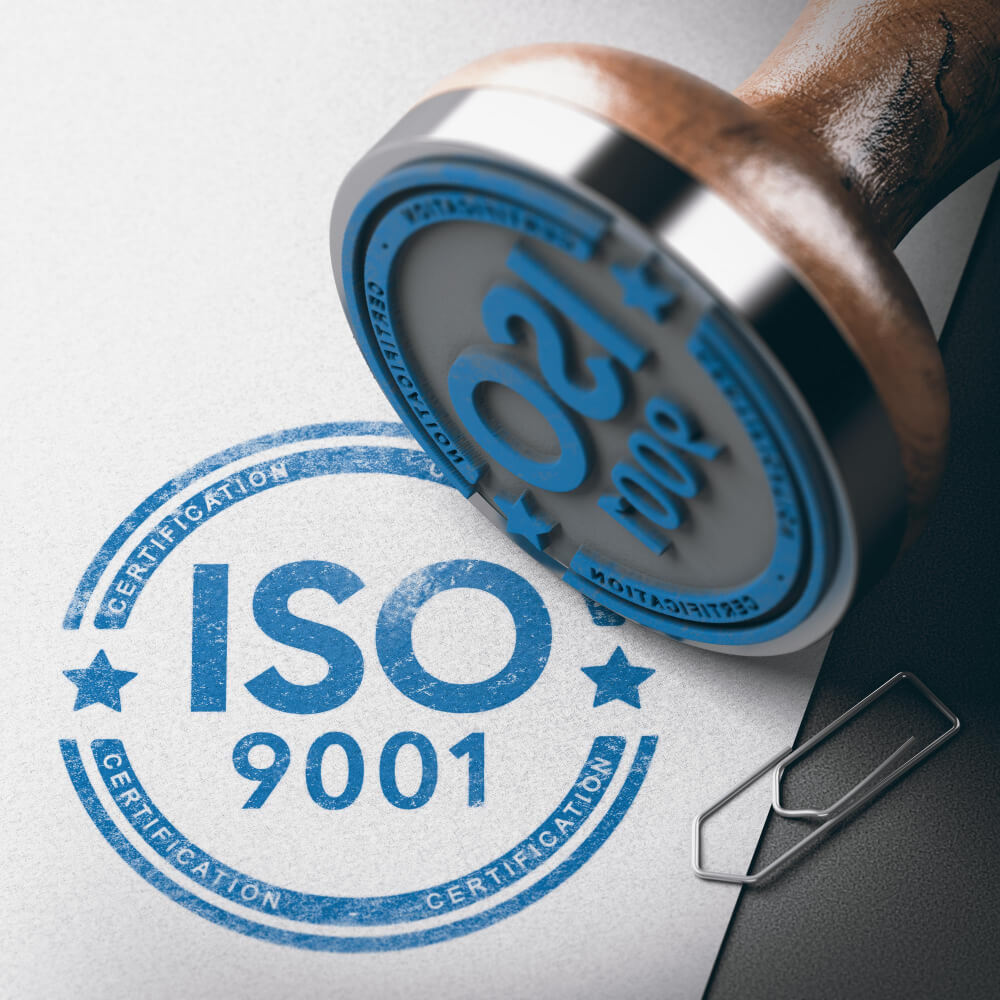
Understanding the Difference
ISO construction types and International Building Code (IBC) construction types serve different purposes and use different classification systems, though both relate to fire resistance and building materials.
ISO Construction Types (Insurance Focus): Developed by the insurance industry to assess property insurance risk, ISO classifications (Types 1-6) primarily focus on potential for fire loss and insurance claim severity. The system evaluates the combustibility of materials and fire-resistance ratings to predict building fire performance.
IBC Construction Types (Code Compliance Focus): The International Building Code defines five construction types (Type I, II, III, IV, V) with sub-classifications (A and B) based on fire-resistance ratings. IBC construction types determine allowable building heights, areas, and occupancy loads based on life-safety considerations and fire department access for firefighting operations.
Key Differences:
Purpose:
- ISO: Insurance risk assessment and premium determination
- IBC: Life safety and building regulation compliance
Classification Basis:
- ISO: Focuses on combustibility and total loss potential
- IBC: Emphasizes fire-resistance ratings and compartmentation
Enforcement:
- ISO: Used by insurance companies, not legally mandated
- IBC: Legally enforced through building permits and inspections
Granularity:
- ISO: Six broad categories
- IBC: Five types with A/B subdivisions plus special categories
How They Relate
While ISO and IBC use different classification systems, they evaluate similar building characteristics. Strong correlations exist between systems:
General Relationships:
- IBC Type I-A (Fire-resistive, 3-hour): Typically ISO Type 6
- IBC Type I-B (Fire-resistive, 2-hour): Typically ISO Type 6
- IBC Type II-A (Non-combustible, 1-hour): Typically ISO Type 5
- IBC Type II-B (Non-combustible, unrated): Typically ISO Type 3 or 4
- IBC Type III-A (Combustible interior, 1-hour): Typically ISO Type 2
- IBC Type III-B (Combustible interior, unrated): Typically ISO Type 2
- IBC Type V-A (Wood frame, 1-hour): Typically ISO Type 1
- IBC Type V-B (Wood frame, unrated): Typically ISO Type 1
These correlations aren’t absolute; specific building characteristics determine precise classifications in each system. A building’s IBC type provides useful guidance about likely ISO classification, but a professional insurance assessment remains necessary for accurate determination.
Why Both Matter
Property owners must consider both classification systems:
Building Code Compliance (IBC): Required by law for building permit approval, occupancy certificates, and ongoing code compliance. Non-compliance can prevent occupancy, create legal liability, and cause insurance problems.
Insurance Classification (ISO): Determines insurance availability, coverage terms, and premium costs. Incorrect ISO classification can result in inadequate coverage, coverage gaps, or overpayment for insurance.
Optimization Strategy: When planning construction, design buildings meeting both IBC requirements for intended use AND achieving a favorable ISO classification for insurance purposes. Sometimes modest design modifications satisfying both systems generate substantial long-term benefits.
How to Improve Your Building’s ISO Classification
Upgrade Options and Considerations
While fundamentally changing a building’s construction type (e.g., frame to fire-resistive) typically proves economically impractical, several strategies can improve classification or reduce fire risk and insurance costs.
Adding Fire Protection Systems
Automatic Sprinkler Systems: Installing comprehensive automatic sprinkler systems represents the single most effective fire protection upgrade for most buildings. While sprinkler installation doesn’t change ISO construction classification, it dramatically reduces fire loss potential and generates substantial insurance premium discounts (typically 15-40%).
Cost Considerations:
- Retrofit commercial buildings: $5-$12 per square foot
- Retrofit residential buildings: $3-$8 per square foot
- New construction: $2-$5 per square foot
Return on Investment: Premium savings often recover sprinkler installation costs within 5-10 years, with ongoing annual savings thereafter. Beyond insurance savings, sprinklers provide life safety benefits and reduce business interruption exposure.
Fire Alarm and Detection: Advanced fire alarm systems with smoke detection, heat detection, and monitoring provide early fire detection, enabling faster response and reduced losses. While premium discounts are smaller than sprinklers (typically 5-15%), these systems offer excellent life safety value.
Structural Modifications
Fireproofing Steel Members: Steel frame buildings lacking adequate fireproofing can often upgrade from non-combustible (ISO Type 3) to modified fire-resistive or fire-resistive (ISO Type 5-6) by applying fireproofing to structural steel. This requires significant investment but can dramatically improve insurance rates for high-value properties.
Application Methods:
- Spray-applied fireproofing ($2-$8 per square foot of steel surface)
- Intumescent coatings ($8-$20 per square foot, for exposed architectural steel)
- Board protection ($12-$25 per square foot)
Adding Fire Walls: Installing fire walls, creating separate fire areas within buildings, can improve insurance treatment even without changing overall classification. Fire walls limit fire spread, reducing maximum probable loss and potentially qualifying for premium credits.
Upgrading Roof Systems: Buildings with combustible roof systems might upgrade to non-combustible metal roofing, improving fire resistance and potentially favorably affecting classification assessment. This upgrade often makes sense when roof replacement is needed anyway for maintenance reasons.
Documentation and Reclassification
Correcting Misclassifications: Buildings sometimes suffer unfavorable classifications due to incomplete inspections, outdated information, or misunderstandings about construction. Professional reassessment might reveal that buildings actually merit better classifications than currently assigned.
Documentation Improvements: Providing insurers with detailed construction documentation (original plans, specifications, fire-resistance testing reports, renovation records) can demonstrate that buildings merit better treatment than assumed based on limited information.
Fire Protection System Documentation: Ensuring insurers have complete information about existing sprinkler systems, alarm systems, and fire protection features helps secure all available premium credits. Many buildings don’t receive full credit for existing protection simply because insurers lack documentation.
Cost-Benefit Analysis
Before investing in fire protection upgrades, conduct a thorough cost-benefit analysis:
- Obtain Current Insurance Costs: Document current premiums and coverage
- Get Premium Quotes for Upgraded Building: Ask insurers for quotes, assuming planned improvements
- Calculate Annual Savings: Determine annual premium reduction from upgrades
- Estimate Upgrade Costs: Get contractor quotes for planned work
- Calculate Payback Period: Divide the upgrade cost by the annual savings
- Consider Additional Benefits: Account for life safety, business continuity, and property value improvements beyond insurance savings
Upgrades with payback periods under 10 years often make economic sense, particularly when combined with other benefits. Upgrades required anyway for maintenance, code compliance, or tenant requirements may justify implementation even with longer payback periods.
Common Questions About ISO Construction Types
Frequently Asked Questions
Q: Can my building have different ISO types for different sections?
A: Yes, buildings often incorporate multiple construction types in different areas. For example, an older building might have original masonry construction with a wood-frame addition. In such cases, insurance underwriters typically assign the predominant construction type or use separate classifications for distinct sections when appropriate. Large complex buildings might have multiple construction classifications affecting different insurance coverage sections.
Q: How often should buildings be re-evaluated for ISO classification?
A: Buildings should be reassessed whenever:
- Major renovations or additions occur
- Insurance policies are renewed with new carriers
- Market conditions or building use change substantially
- Fire protection systems are added or upgraded
- Significant deterioration affects structural elements
- Premium rates seem inconsistent with building quality
As a general rule, comprehensive reassessment every 3-5 years helps ensure accurate classification and appropriate insurance coverage.
Q: Does ISO Type affect property value or resale?
A: ISO construction type can significantly affect property value, particularly for commercial and investment properties. Buildings with superior fire resistance (ISO Types 5-6) command premium values due to:
- Lower ongoing insurance costs for owners and tenants
- Reduced business interruption risk
- Better tenant attraction and retention
- Lower risk profile for lenders and investors
- Longer building lifespan and reduced maintenance
For commercial properties, the capitalized value of insurance savings alone might add 5-15% to property values. Residential properties see less dramatic but still measurable value impacts.
Q: Can I dispute my insurance company’s construction classification?
A: Yes, property owners can challenge classification determinations they believe are inaccurate. Successful disputes require:
- Professional documentation (engineer’s or architect’s assessment)
- Original building plans and specifications
- Fire-resistance testing documentation
- Photographic evidence of actual construction
- Inspection reports from qualified professionals
Present evidence to your insurance broker who can work with underwriters to reconsider classification. If insurers won’t reconsider, obtaining quotes from other carriers sometimes reveals different classification interpretations.
Q: Are there different standards besides ISO for construction classification?
A: Yes, several other classification systems exist:
- International Building Code (IBC): Most widely adopted building code in the U.S.
- NFPA building codes: An alternative building code system used in some jurisdictions
- FM Global: Commercial insurer using proprietary classification system
- European standards (EN 13501): Fire classification for construction products in Europe
Each system serves specific purposes and uses different terminology, but all evaluate similar building fire resistance and safety characteristics.
Q: Does ISO classification affect mortgage lending?
A: Indirectly, yes. Lenders care primarily about protecting their collateral. Buildings with poor fire resistance (ISO Type 1-2) in high-risk areas might face:
- Higher required insurance coverage
- More stringent insurance requirements
- Lower loan-to-value ratios
- Required fire protection system installation
Commercial lenders particularly scrutinize the construction type for investment properties, as insurance costs affect property cash flow and value.
Q: How does climate or location affect classification considerations?
A: Location significantly influences construction type importance:
Wildfire-Prone Areas: Combustible construction (ISO Type 1-2) faces dramatically higher insurance costs or potential uninsurability in high-wildfire-risk zones. Some insurers now require non-combustible construction or refuse coverage for frame buildings in extreme wildfire hazard areas.
Urban vs. Rural: Urban buildings benefit from better fire protection (closer fire stations, better water supply), potentially offsetting some construction type disadvantages. Rural combustible buildings face compounded risk from construction type, plus poor fire protection access.
Hurricane/Wind Zones: While ISO focuses on fire resistance, storm-prone areas face additional considerations. Steel and concrete construction (ISO Types 3-6) typically performs better in high-wind events than wood frame (ISO Type 1), providing additional value beyond fire resistance.
Future Trends in Construction Classification
Evolving Standards
Updated Materials and Methods: As construction technology evolves, classification systems adapt to new materials and methods:
Mass Timber Construction: Cross-laminated timber (CLT) and other mass timber products enable taller wood buildings with improved fire performance compared to light-frame construction. Classification systems are evolving to appropriately assess these materials, which demonstrate better fire resistance than conventional wood framing while remaining technically combustible.
Hybrid Construction: Modern buildings increasingly combine multiple structural systems, concrete cores with steel framing, and mass timber with concrete floors. Classification systems must accommodate these hybrid approaches, evaluating overall fire performance rather than single-material categories.
Advanced Fire Protection: Smart building systems with integrated fire detection, suppression, and control systems may eventually receive recognition in classification systems, acknowledging that active fire protection can sometimes compensate for less fire-resistive passive construction.
Climate Change and Wildfire Risk
Increasing wildfire frequency and intensity, driven by climate change and development patterns, is reshaping construction classification considerations:
Wildfire-Urban Interface (WUI): Buildings in wildfire-prone areas face heightened scrutiny. Some insurers now apply additional classification criteria for WUI properties, emphasizing ember resistance, vegetation clearance, and fire-resistive roof and exterior wall assemblies regardless of structural frame type.
Insurance Availability: Parts of California, Colorado, and other high-wildfire-risk states are experiencing insurance market disruption, with some carriers withdrawing entirely from combustible construction in extreme-risk areas. This trend may accelerate the adoption of fire-resistant construction in these regions.
Building Code Evolution: Jurisdictions in wildfire-prone areas are adopting stricter building codes requiring fire-resistive materials for exterior assemblies. Chapter 7A of the California Building Code, for example, mandates specific wildfire-resistant construction features that effectively override standard ISO classifications for wildfire performance.
Sustainability Considerations
Carbon Emissions: Growing focus on embodied carbon in building materials creates tension with fire-resistive construction. Concrete and steel production generate substantial carbon emissions, while wood frame construction stores carbon. Future classification systems might balance fire safety with environmental impacts.
Recyclability: Steel and concrete buildings offer excellent recyclability at end-of-life, while wood frame buildings generate more waste. This sustainability dimension may eventually factor into classification considerations.
Life Cycle Analysis: A comprehensive building evaluation considering initial construction impacts, operational performance, and end-of-life disposal might supplement traditional fire-focused classifications, providing a more complete property risk assessment.
Conclusion
ISO construction types provide an essential framework for understanding building fire resistance, insurance risk, and safety performance. From combustible frame construction (ISO Type 1) to fire-resistive concrete and steel structures (ISO Type 6), these classifications directly impact insurance costs, safety, property values, and building design decisions.
For property owners, understanding your building’s ISO construction type helps you:
- Anticipate and manage insurance costs effectively
- Make informed decisions about fire protection investments
- Evaluate buildings accurately when buying or selling property
- Understand fire risks and appropriate safety measures
- Plan renovations and improvements strategically
For builders and developers, considering ISO classifications during design optimizes long-term building performance:
- Modest construction upgrades sometimes generate substantial insurance savings
- Fire-resistive construction commands premium property values
- Tenant attraction and retention improve with lower insurance costs and enhanced safety
- Financing terms often improve for superior construction types
As building technology evolves and climate change reshapes risk landscapes, construction classification systems will continue adapting. However, the fundamental principle remains constant: buildings constructed with fire-resistive materials and methods provide superior safety, reduced insurance costs, and better long-term value than combustible construction.
Whether you’re building new construction, renovating existing property, or simply seeking to understand insurance costs, ISO construction types provide essential knowledge for informed decision-making about fire safety and property protection. Taking time to understand these classifications and their implications helps protect people, property, and investments while optimizing costs over the building’s entire lifecycle.
Additional Resources
Official Standards and Organizations
- Verisk Analytics / ISO:– Official ISO classification information and Public Protection Classification program
- International Code Council: – International Building Code resources and publications
- National Fire Protection Association (NFPA):– Fire safety codes, standards, and research
For Construction and Insurance Professionals
Understanding ISO construction types is crucial for accurate property evaluation, appropriate insurance placement, and effective risk management. For detailed building assessments, construction planning, or insurance optimization, consult with:
- Licensed fire protection engineers
- Certified insurance appraisers
- Professional risk management consultants
- Experienced commercial insurance brokers
- Structural engineers specializing in fire-resistive design
Last Updated: October 2025
This article provides educational information about ISO construction types and should not be considered insurance, legal, or engineering advice. Construction classifications, insurance requirements, and building codes vary by location and change over time. Always consult with qualified professionals (licensed insurance agents, engineers, and building code officials) for guidance specific to your property and situation.

